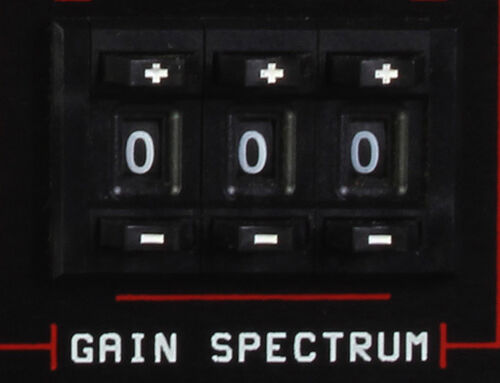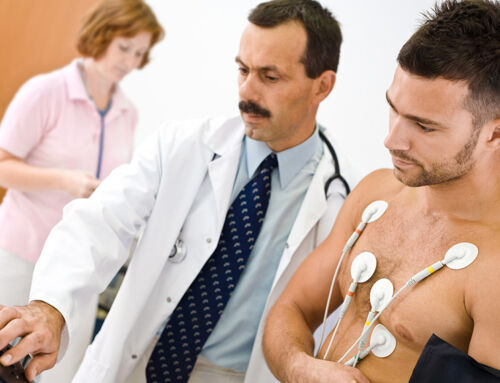
The Importance of Proper Probe Placement
The Acuscope is programmed to “know what to do” when it communicates with the cells, acquiring biofeedback and delivering a corrective influence. The responsibility of an Operator, a Biotechnician, is to place the probes in appropriate positions that allow the technology to most efficiently communicate with the biology.
The nature of polarized electricity is that it flows away from the (+) positive charge; and towards the (-) negative charge. Pos pushes; Neg pulls.
Using the Acuscope and Myopulse probes and electrodes, we establish two points of contact at a time. This establishes a closed circuit.
WHILE IN READOUT MODE: Between stimulations, the Active Electrode is in Negative polarity, the Reference is in Positive. This causes the current to move only in one direction, a direct current moving from the body into the instrument. During this time, the Acuscope is measuring the degree of resistance to a gentle, continuous force of about 3 or 4 µA’s (microamps) and simultaneously revealing the results to the Operator (and Patient if they are interested) by showing numbers on the digital display.
DURING TREATMENT: As soon as a treatment cycle is initiated, the equipment is programmed to switch the polarity of the electrodes and continue to do so every two seconds during treatment. This causes the current to flow first in one direction, then in the opposite direction. The microcurrents travel in-and-out/back-and-forth in both directions through the tissue, between the two electrode contact sites. This is known as an Alternating Current.
While the Active electrode has negative (-) polarity, biofeedback is being acquired (pulled in and picked up) by the instrument; the Reference electrode having positive (+) polarity, it is pushing the current toward the Active.
When the Active electrode has positive (+) polarity, a micro-amperage force is pushing the current out from the instrument and into the tissue; the Reference electrode having negative (-) polarity, it is pulling the current towards itself.
In order to facilitate successful treatment, one must understand that the programming of the Acuscope is according to the way our body’s bioelectricity moves naturally. Neurotransmitters deliver messages from the brain toward the toes. When the biofeedback from the body is being received by the brain, it is moving in the opposite direction, from the toes up toward the brain.
Much like the brain/body communication process, the Acuscope sends and receives. Thus, probe and electrode positioning is an important factor. The Active Electrode (any single tip Trigger Probe or electrode plugged into the red ring jack) should be placed closer to the brain; with the Reference further toward the toes so that the current is moving from Active towards the Reference when the Acuscope is sending; and back up toward the brain from Reference towards Active when the Acuscope is receiving biofeedback.
During the two-second phase when microcurrent carrier waves collect feedback from the tissue, the Active electrode serves as the pick-up point. This location is also where the wave enters and permeates the tissue to deliver the “corrective influence” transmitting the signal into and through the body. The operator, understanding this fundamental aspect, strategically positions and repositions the Active and Reference electrodes on the body. This meticulous placement ensures optimal performance, allowing the instrument to execute its programmed functions effectively.






